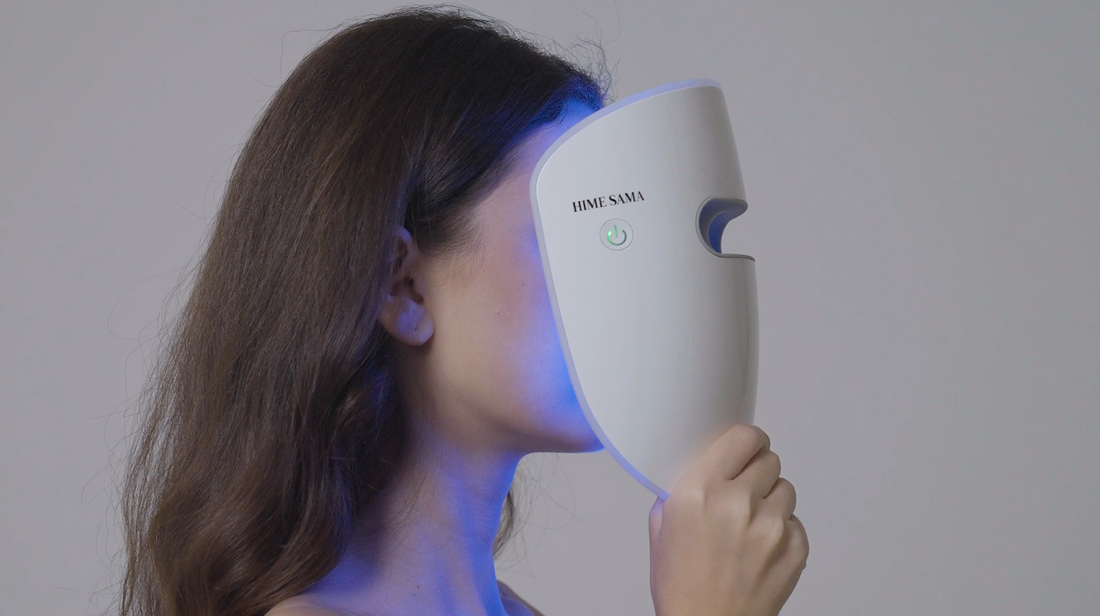In the realm of modern wellness, LED blue light phototherapy has emerged as a common approach to promoting health and improving acne. Through this blog post, we embark on an enlightening journey to unveil the science behind LED blue light, its wavelength considerations, therapeutic benefits and essential precautions.
The working principle of LED blue light phototherapy
Photodynamic therapy is a treatment method that utilizes light to activate exogenously administered or endogenously formed photosensitizers. In this process, when the photosensitizer is exposed to light activation, it generates singlet oxygen and reactive radicals, leading to the destruction of bacteria.
The pathogenesis of acne involves a Gram-positive bacterium known as Propionibacterium acnes. This bacterium is associated with the development of acne. As part of its normal metabolic processes, P. acnes synthesizes certain photosensitizing compounds such as protoporphyrin and coproporphyrin. These endogenous porphyrins achieve optimal photoexcitation when irradiated with light at wavelengths ranging from 407 to 470 nanometers (nm), resulting in the generation of singlet oxygen and reactive radicals, subsequently causing bacterial destruction. These wavelengths correspond to the blue light range within the visible spectrum.
LED Blue Light Wavelength Selection:
The LED blue light lies in its wavelength spectrum, spanning approximately 380 to 500 nanometers. It is well known that LED Therapy using light energy in the blue light range of the electromagnetic spectrum (400 nm-500 nm) is very effective in treating mild to moderate acne vulgaris.
However, shorter wavelengths in the blue range of light energy, closer to the ultraviolet range, and specifically 415 nm, have been shown in clinical studies to increase the likelihood of triggering hyperpigmentation. The fundamental mechanism of action seems to be that light energy directly targets melanocytes in the skin to stimulate melanogenesis pathways. On these rare occasions, the
darker the skin the more severe and the more long-lasting the hyperpigmentation, particularly with Fitzpatrick Type III and IV skin types. Nevertheless, hyperpigmentation is transient and typically resolves in 2 weeks to 2 months.
Similar to the depth of penetration, the longer the wavelength of light energy, the less severe and shorter-lasting the hyperpigmentation. Clinical studies indicate that the possible triggering of hyperpigmentation decreases rapidly in wavelengths longer than 465nm. Accordingly, skin care professionals and their clients/patients may be better served by the use of LED devices that emit blue light energy closer to 465 nm, which is clinically proven to be both effective in treating acne vulgaris, and less likely to trigger hyperpigmentation.
The Potent Potpourri of LED Blue Light Benefits:
In its initial applications, blue LED light was harnessed to address psoriasis and inflammatory skin conditions, eradicate bacteria, and provide relief for sensitive skin. In the contemporary realm of skincare, this specific wavelength has become the preferred choice for individuals with acne-prone and oily skin. A significant advantage of blue light lies in its capacity to curtail sebaceous gland activity, a pivotal action that aids in the removal of surplus sebum responsible for pore blockage and blemishes. This noteworthy attribute can be effectively harnessed through the utilization of HIME SAMA Miracle STAR's blue light feature.
Here, we highlight a range of substantiated benefits stemming from blue LED light therapy:
- Reduction in acne and blemishes
- Achievement of a shine-free complexion and promotion of healthy pores
- Enhanced mitigation of acne scars and proactive prevention of scarring
- Diminished symptoms associated with inflammatory skin conditions, including rosacea and eczema
- Amelioration of sun-induced damage, encompassing sun spots and related effects.
Precautions for LED Blue Light Phototherapy:
- Thoroughly cleanse the face or other targeted treatment areas with facial cleanser.
- When using light therapy products without built-in eye protection, always wear protective goggles during the treatment to shield your eyes.
- Maintain facial moisturization after treatment and minimize the use of cosmetics if possible.
- Practice sun protection diligently after treatment.
Please note that these precautions are essential to ensure safe and effective use of LED blue light phototherapy.

